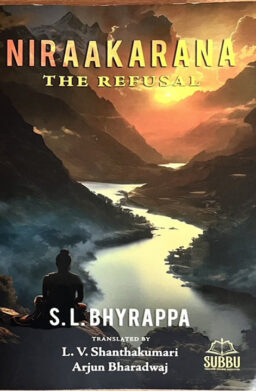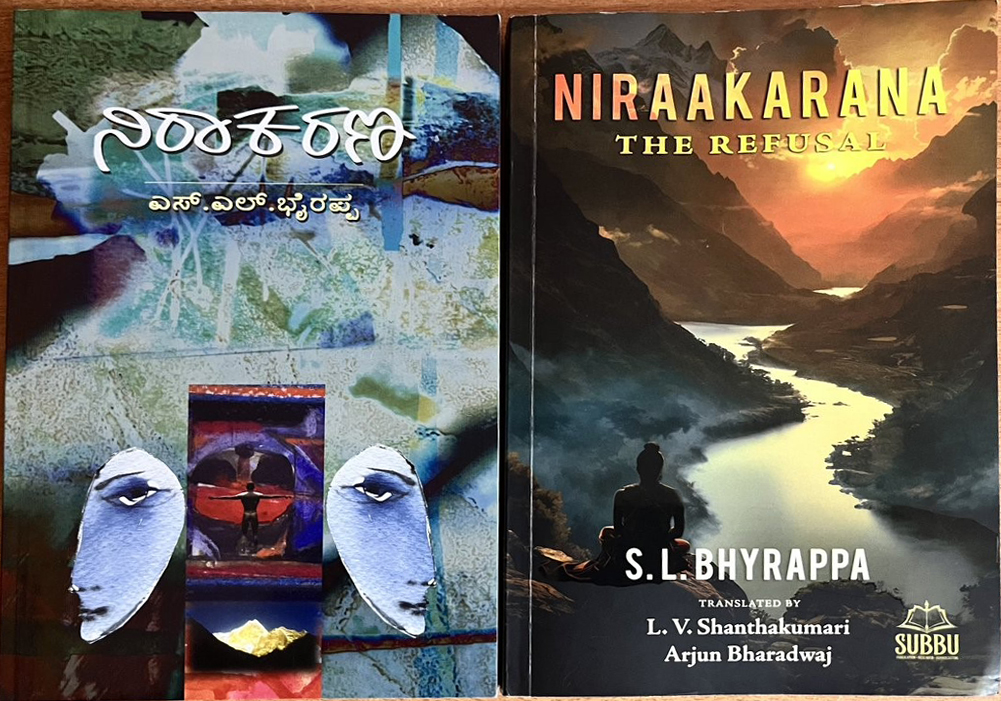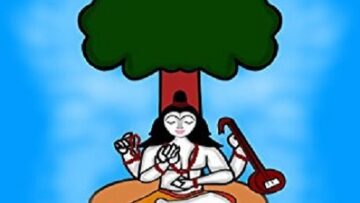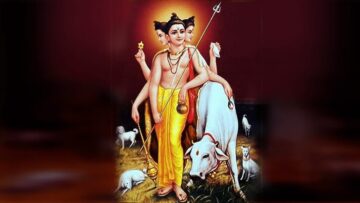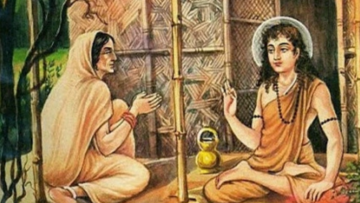Niraakarana is one of the more contemplative, philosophical, yet heart wrenching novel by the genius Saraswati Putra, Dr. S. L. Bhyrappa. This book was first released in Kannada in 1971. This book has seen immense success with multiple publications leading to 21 editions, with the last publication in 2022. This book has evoked varied reactions across the spectrum of readers, more so with multiple readings. Like a fine wine, this novel also provides interesting perspectives and thought triggers with every multiple reading. The English translation was authored by the renowned author and scholar Prof. L. V. Shantakumari along with author, researcher Arjun Bharadwaj in 2024.
In the Epilogue of the English version, the translators explain that there is no accurate meaning for the word “Niraakarana” and hence, the refusal is the closest approximation. Personally, I totally agree with this assessment. Niraakarana is all about the refusals of the protagonist at various junctures of life. While some of his reactions could be justified due to childhood experiences, the overall refusal to come to terms with life is perhaps the most stand-out aspect of the book. Narahari refuses to shoulder the responsibilities of a father and yearns for solitude without considering the future of his own children. During his sanyasa period, the desire to achieve something exotic like the famed Baramasi Baba drives him away from the sadhana prescribed by his Guru. The worst part of his journey is the refusal to accept the fact that his son is also part of the orphanage and his indifference towards the suffering kid. At every stage of life, Narahari refuses to accept his responsibility as a householder and hence, the title is very apt for the scenario.
While some of the other famous novels Aavarana, Dharmashree, Tabbaliyu Neenade Magane make us contemplate about the external world, the happenings of which have immense and far reaching ramifications on the self and the world alike, this is quite a different one. This novel purely delves into the internal world or rather an assumed internal world of the protagonist and the ramifications thereof on his family, specifically his children.
The novel is about the journey undertaken by Narahari, twice-widowed by the age of 40 and a father of five children, who gives them up for adoption and seeks solitude. Yearning for detachment from attachment, he undergoes an arduous journey through Himalayan peaks to the plains of Ganga and the ultimate city of Kashi. Life brings him back to Mumbai where his journey started and along with it some harsh realities. What happened to the 5 children? How their lives get intertwined with him again and what it leads him to becomes the rest of the story?
Narahari has a natural inclination towards vedantic concepts & focusses on solitude as a means towards a higher spiritual growth. After meeting a Guru at Hrishikesh, he undertakes an arduous journey through the white blanket of Himalayas climbing up to Kedarnath. His Guru would have recommended him not to come to plains until a stipulated amount of time. Metaphorically, the climb to higher altitudes includes acclimatisation at various stages of the climb and making it to the summit of spiritual enlightenment. However, Narahari is more enchanted by the exotic and wishes to reach the highest pinnacle without the requisite effort or mental framework to support it. During his stay in Kedarnath, he is unable to meditate citing the reasons for the lack of sound or excess of the same. All along the journey, Narahari doesn’t realise that his desire for detachment is his biggest attachment.
There are 2 phrases which stand out in the entire book. Captured on the back cover of the English version, the first one to comprehend is thus: “People who claim to have a vedantic bent of mind are always keen on running away from their responsibilities”. For a person like Narahari who has deep interest in Spirituality and vedantic pursuits, I personally wonder why didn’t he ever comprehend that performing one’s own ordained duties itself is the path to pursue. One of the most surprising and quite frankly irritating aspects of his personality is that one never learns why he wants solitude. He represents those of us who aspire for something very exotic or utopic without comprehending the rationale and need for the same or applicability of that ideal on self.
In every stage of his journey, Narahari constantly craves for something, yet keeps claiming that he wants to free himself from detachment. I wonder if he ever realises that “freeing from attachment” itself is the biggest attachment he has. Every time he comes face to face with a problem of samsara / society, he uses this garb as his escape route. He comes across someone who hasn’t found peace or rather made a compromise with the past, for he is searching for his motherly love in his wife or a rank outsider like a prostitute.
In Srimad Bhagavad Gita, Sri Krishna advises Arjuna to free oneself from the attachment of success and failure, but implores him to perform the duties nevertheless
योगस्थ: कुरु कर्माणि सङ्गं त्यक्त्वा धनञ्जय |
सिद्ध्यसिद्ध्यो: समो भूत्वा समत्वं योग उच्यते ||2.48||
Narahari comes across as someone who is fixated on the detachment and exotic locales of snow clad Himalayas, yet doesn’t understand the basic tenets of dharmic wisdom. What shocks the reader is thus: A person is willing to be a father figure to 50 orphans, yet wants to run away from the same when his son is brought into the orphanage. What is that which drives him away from the responsibilities of a father? Quite a complex character.
The next phrase that haunted me a lot is what Bhavani asks her father: “Are Sanyaasa, Saksatkaraa and Mukti meant only for you”. A simple sentence with tremendous profound implications. Quite often, humans get attracted to the utopian Sanyasaa ashrama while foregoing their other responsibilities. This reminds of a very important and relevant story from Devi Bhagavata Purana, wherein Shuka i.e. son of Veda Vyasa wants to embrace Sanyasa and is recommended not to do so by his father, Bhagwan Veda Vyasa. Finally, Vyasa recommends his son to meet Janaka, ruler of Mithila (not father of Seetha – Janaka is a titular position), who teaches him the importance of Grhastaashrama. We have one more example of a normal person like Butcher teaching a Sanyasi in Mahabharatha (also termed as Vyadha Gita). Life is all about embracing the responsibilities and working hard to fulfil them.
Beyond these, the novel provides a deep insight into the plight of adopted children and the hardships faced by them. The realities of a couple does deliver a sucker punch in the belly. Quite gut-wrenching.
This novel opens up different perspectives to readers across various age groups at various junctures of life. In modern day society with increasing nuclear family setup, it becomes imperative that everyone understands the needs and demands of their roles in the family and society. One can’t run away from our responsibilities towards our immediate family and wider society in general. Spiritual enlightenment could still be pursued within the framework of familial life, with higher realms becoming a natural progression over the course of time. This novel is a definite eye-opener in this regard.
This novel is a terrific eye-opener on adoption and potential pitfalls of the same if not handled correctly. This is a fantastic commentary on the society which the author has woven beautifully into the narrative.
Personally, I feel Shenoy’s words to Narahari are prophetic. In modern society, the lines between selfless and selfish are blurred and the viewer’s perspective determines how the actions are perceived.
A fantastic novel, which needless to say is a MUST READ one. The English version is absolutely fantastically translated and is very close to the Kannada original. A novel that leaves with more questions, some anger and quite a bit of melancholy.
Disclaimer: The opinions expressed in this article belong to the author. Indic Today is neither responsible nor liable for the accuracy, completeness, suitability, or validity of any information in the article.

